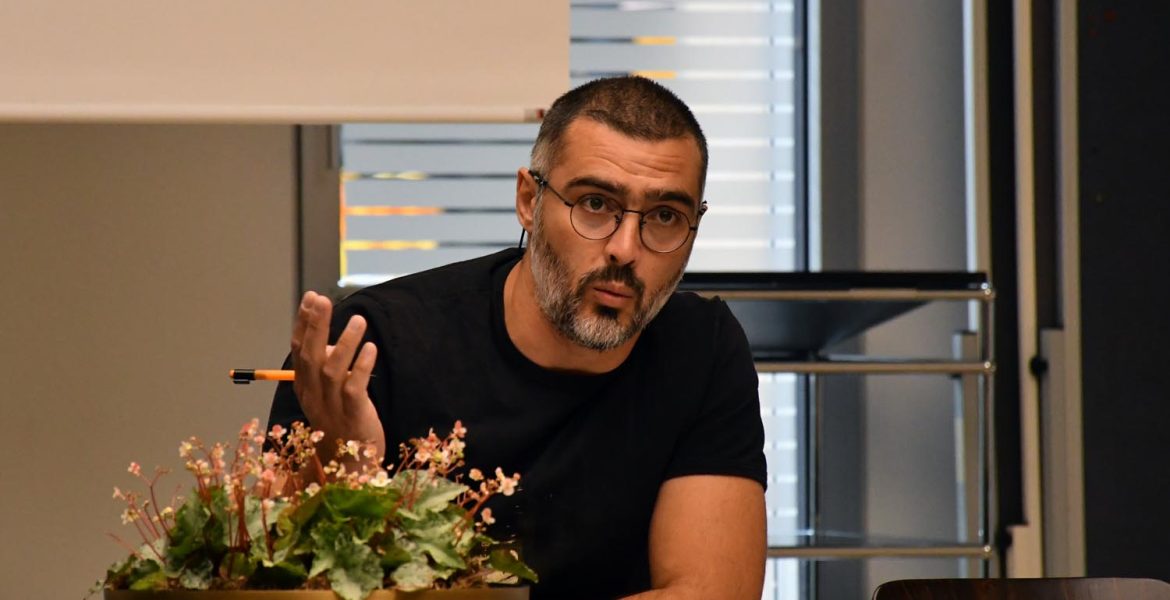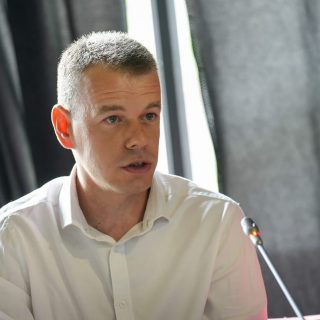The collapse of the Eastern Bloc was celebrated in the West as the triumph of freedom over communism, nurturing the illusion that history had reached its conclusion. Fukuyama’s “end of history” became shorthand for the expectation of a liberal era in which democracy and prosperity would erase old ideological and political divisions.[1] Within this narrative, the wars in Yugoslavia were framed as the last convulsions of a defeated civilization, a Balkan anomaly soon to be absorbed into the democratic order of Europe. Yet this proved a dangerous delusion. The Yugoslav conflicts, marked by ethnic cleansing and religiously charged nationalism, revealed that the “post-historical” dream rested on paternalistic and orientalist assumptions about the Balkans as Europe’s internal Other.[2] This colossal delusion was laid bare by the Yugoslav wars, which exposed the persistence of fundamentalist ethno-religious narratives and, through the Dayton framework and later EU policies, normalized the results of violence, entrenching a “neocolonial” dynamic in which the region was managed as a space to be disciplined, supervised, and perpetually reminded of its alleged backwardness.
The conflicts that followed in the 1990s, such as those in Afghanistan, Lebanon, Palestine, Israel, Northern Ireland, Armenia, Azerbaijan, Chechnya, Kashmir, East Timor, Sri Lanka, Tibet, Iran, and elsewhere, marked by these narratives, quickly and ruthlessly shattered the idyll of the post-historical democratic-liberal dream.[3] This ruthlessness persists to this day, manifesting through numerous conflicts in Ukraine, Gaza, Sudan, Ethiopia, Iraq, Yemen, Syria, Somalia, Libya, Nigeria, the Central African Republic, the Democratic Republic of the Congo, Western Sahara, Cyprus, Myanmar, Mali, and others.[4] Today, of the roughly 110 ongoing conflicts around the world, a significant number involve ethnic(national) and religious elements, which only confirms the thesis that, after the end of the Cold War, religious and ethnic conflicts have emerged as the greatest threat to global security.[5] In a grotesque yet brutal way, the breakup of the SFR Yugoslavia, once predicted as the culmination of one overcome civilizational period, has become, in principle, a prelude to what awaits the world in the future. While it is both difficult and intellectually dishonest to draw an uncritical parallel between the Yugoslav conflict and the other conflicts previously mentioned – especially since other forms of conflict were also present in those cases – it would be highly reckless and dangerous to underestimate the ethnic(national) and religious components, as they unquestionably dominate these disputes. Thus, even though the Yugoslav conflict may seem minor, outdated, or insignificant in the broader historical context from today’s perspective, it undeniably marked the first major symptom of what is now a widespread disease: the radical intertwining of ethnic(national) and religious aspects, whose ultimate diagnosis is, in principle, catastrophic.
The most horrifying part of the diagnosis that the collapse of Yugoslavia sends to the contemporary world is encapsulated in the message that the politics of ethnic cleansing and genocide ultimately proved successful. This was, in a sense, confirmed by the Dayton Agreement (1995), whose primary role was to end the bloodshed but which indirectly validated the results of these crimes. Anyone who doubts this need only compares the ethnic maps before and after the war in the former Yugoslavia to witness a vivid illustration of this claim – these areas are now almost entirely cleansed of “others.” The role of religious institutions, specifically some parts of the Serbian Orthodox and Croatian Catholic religious structures, as a form of “spiritual support” for these bloody ethno-nationalist agendas was undeniable, further highlighting the dramatic nature of the case.[6]
However, in the world we live in today, and given the global challenges we face, ethnic(nationalist) ideologies supported by certain religious authorities are not unknown. On the contrary, they are foundational discourses of geopolitical developments, and it is impossible to ignore how this issue, at this particular historical juncture, is significantly reshaping the contours of our reality, but while the problem itself is not new, the nature of what drives it is. To better illustrate the complexity and sensitivity of the situation, I will highlight two perhaps universally recognized examples: ISIL and American exceptionalism. Although ISIL is often perceived as Islamic fundamentalism that transcends all ethnic(national) and confessional divisions within the Muslim population, a closer look reveals that the organization is primarily led by Iraqi Sunnis, with members of other Arab and Muslim communities, along with international volunteers, under their command.[7] Similarly, American exceptionalism, which is often viewed as an imperialistic concept where ethnic and religious components are deemed irrelevant, is increasingly aligning with the idea of White Christian Nationalism, replacing the classic lack of ethnic and religious aspects with an emphasis on the superiority of the white race and Evangelical Christianity.[8] This demonstrates that the phenomenon of the merging of ethnic(national) and religious elements cannot be treated lightly, and given the circumstances, it also suggests that it cannot be analyzed using traditional tools and methods. This is especially evident when considering that the emergence of these two phenomena has definitively ended the post-historical vision of a socially and politically balanced world, highlighting that the classic critique of religion as a societal phenomenon is no longer relevant, as religion as the phenomenon has, in effect, become “society itself”, and that the traditional critique of nationalism as something outdated fails to address the new forms in which this ideology resurfaces. The Yugoslav case clearly demonstrates both of these dynamics.
Namely, the ethnonational and religious fusion discussed here is not simply a romanticized relationship between religious practices within a single ethnocultural group, but it represents the sacralization of ethnonationalist agendas, which expand their influence through violent and deadly means. For this reason, I coined the term ethnoreligiosity to describe this phenomenon in the context of the former Yugoslavia.[9] It emerges at the intersection of ethnototalitarian ideology and ethnoclerical aspirations, offering clear contextual explanations. Still, as a concept, it is also applicable to analyzing similar issues in other regions – such as Rwanda, Sri Lanka, Ukraine, Russia, the Middle East, and the like. Ethnototalitarianism, in brief, is a doctrine that seeks to establish an ethnically homogeneous and ideologically uniform state across a territory inhabited by one ethnicity, regardless of whether part of that ethnicity resides in another state or whether other ethnic groups within that territory must be considered equal citizens.[10] Ethnoclericalism refers to the aspiration of certain religious institutions to establish a unified ethnonational church within such an ethnically homogeneous and ideologically uniform state, with church structures becoming an integral part of the political establishment.[11] In the case of Serbian ethnototalitarianism, this manifests in the idea of Greater Serbia, while Croatian ethnototalitarianism corresponds to the concept of Croatia to the Drina River (Greater Croatia), or their existing counterparts, the Republic of Srpska as a de jure state and Herceg-Bosna as a de facto state. The ethnoclerical ambition behind this is evident in the Ustasha agenda (Croatian radical ethnonationalism) within the Croatian Catholic context and in the Chetnik movement of Draža Mihailović (Serbian radical ethnonationalism) within the Serbian Orthodox context, both of which add an ethnoclerical dimension to these radical ethnonationalist ideologies.
Of course, the agendas mentioned are not the same today as they were in the 1940s or 1990s during the Balkan conflicts. Yet to claim they are no longer relevant is to be socially blind and politically naive. Policies of ethnic cleansing and genocide, supported by certain religious circles, still shape the parameters of post-Yugoslav spaces, reinforced by the paternalistic frameworks of the European Union and international community, which have too often legitimized the outcomes of these crimes rather than undone them. In this way, crimes have been sanctified, while war criminals and profiteers dominate public life. Examining the Yugoslav case, therefore, raises urgent questions, foremost the profitability and normalization of crime as such. Or are those who argue that any resemblance to actual events or persons is coincidental right? And then, “Yugoslavia” knocked on their door as well. Yet this “knock” is more than a reminder of Balkan tragedies: it exposes the colonial continuities in EU–Balkan relations, where the region is still imagined as a space to be disciplined and supervised, an internal colony within the European project.
Branko Sekulić received his master’s degree at the Theological Faculty “Matthias Flacius Illyricus” in Zagreb, Croatia (2011), another at the Ecumenical Institute of the Ukrainian Catholic University in Lviv, Ukraine (2017), and earned a certificate in peace education from the Center for Peace Studies in Zagreb (2009). He obtained his doctoral degree at the Faculty of Protestant Theology at Ludwig-Maximilian University in Munich, Germany (2020), and achieved habilitation in Systematic Theology at the same faculty (2024).
[1] See for instance: Francis Fukuyama, The End of History and the Last Man; Tony Judt, Postwar: A History of Europe Since 1945; Vaclav Havel, The Power of the Powerless; Timothy Garton Ash, The Magic Lantern: The Revolution of ’89 Witnessed in Warsaw, Budapest, Berlin, and Prague; Slavoj Žižek, Did Somebody Say Totalitarianism?; John Gray, False Dawn: The Delusions of Global Capitalism; David Harvey, A Brief History of Neoliberalism; Eric Hobsbawm, The Age of Extremes: The Short Twentieth Century, 1914–1991; Jacques Derrida, Specters of Marx: The State of the Debt, the Work of Mourning, and the New International.; Se also: Larry Diamond, The Spirit of Democracy: The Struggle to Build Free Societies Throughout the World; Michael Doyle, Ways of War and Peace: Realism, Liberalism, and Socialism; Fareed Zakaria, The Future of Freedom: Illiberal Democracy at Home and Abroad; Sheri Berman, The Primacy of Politics: Social Democracy and the Making of Europe’s Twentieth Century; Peter J. Katzenstein, A World of Regions: Asia and Europe in the American Imperium.
[2] In addition to a whole range of authors from the former Yugoslavia, such as Dubravka Stojanović, Nenad Dimitrijević, Svetlana Slapšak, Boris Buden, Igor Štiks, Srećko Horvat, Žarko Paić, and others, this topic is also problematized by, for example: Susan L. Woodward, Balkan Tragedy: Chaos and Dissolution after the Cold War; Mary Kaldor, New and Old Wars: Organized Violence in a Global Era; Misha Glenny, The Fall of Yugoslavia: The Third Balkan War; Mark Mazower, The Balkans: A Short History; Eric Hobsbawm, The Age of Extremes: The Short Twentieth Century, 1914–1991; Iver B. Neumann, Uses of the Other: “The East” in European Identity Formation; Pavlos Hatzopoulos, The Balkans Beyond Nationalism and Identity: International Relations and Ideology.
[3] Jonathan Fox, „Religion and State Failure“, International Political Science Review 25, izd. 1 (2004.): 55.; Jonathan Fox, Ethnoreligious Conflict in the Late 20th Century (Lanham, MD: Lexington books, 2002), 143.
[4] See, for instance „Today’s Armed Conflicts“on the Geneva Academy website; works of Johnathan Fox; specific issues of the Journal of Global Security Studies; the series National and Ethnic Conflict in the 21st Century, published by the University of Pennsylvania Press
[5] Jonathan Fox, Ethnoreligious Conflict in the Late 20th Century (Lanham, MD: Lexington Books, 2002), 143.; See also „Today’s Armed Conflicts“ on the Geneva Academy website
[6] There are many sources on this subject both on the Internet and in other written material. See e.g., Vjekoslav Perica, Balkan Idols (New York, NY: Oxford University Press, 2002).; Srđan Vrcan, Vjera u vrtlozima tranzicije (Split: Glas Dalmacije-Revija Dalmatinske akcije, 2001).; Branko Sbutega, Kurosavin nemir svijeta (Beograd: Plavi Jahač, 2009).; Srećko Badurina, Ekumenska nastojanja (Zagreb: Kršćanska sadašnjost, 2019).; Zvonimir Bono Šagi, Izazovi otvorenih vrata: Kršćansko promišljanje trenutka (Zagreb: Kršćanska sadašnjost, 1993).; Željko Mardešić, Svjedočanstva o mirotvorstvu (Zagreb: Kršćanska sadašnjost, 2002).; Vrcan, Vjera u vrtlozima tranzicije.
[7] Siniša Malešević, Grounded Nationalisms: A Sociological Analysis (Cambridge, MA: Cambridge University Press, 2019), 250. See also: Patrick Cockburn, The Rise of Islamic State: ISIS and the New Sunni Revolution; Khalid Yahya Blankinship, „ISIS: A Case of Nationalism and War“.
[8] Andrew L. Whitehead and Samuel L. Perry, Taking America Back for God: Christian Nationalism in the United States. See also: Philip S. Gorski, American Covenant: A History of Civil Religion from the Puritans to the Present; Robert M. Smith, Civic Ideals: Conflicting Visions of Citizenship in U.S. History; Anatol Lieven, America Right or Wrong: An Anatomy of American Nationalism; Richard Balmer, Thy Kingdom Come: How the Religious Right Distorts the Faith and Threatens America; Paul Miller, The Religion of American Greatness: What’s Wrong with Christian Nationalism; Andrew Hartman, A War for the Soul of America: A History of the Culture Wars
[9] For more, see Branko Sekulić, Ethnoreligiosity in the Contemporary Societies of the Former Yugoslavia: The Veils of Christian Delusion (Lanham, MD: Lexington Books/Fortress Academic, 2022).; Branko Sekulić, The Theology of Ethnocultural Empathic Turn: Getting to the Core of Sacralized Crime (Lanham, MD: Lexington Books/Fortress Academic, 2024).
[10] See Dejan Jović, Rat i mit: politika identiteta u suvremenoj Hrvatskoj (Zagreb: Fraktura, 2017).
[11] See Perica, Balkan Idols.




